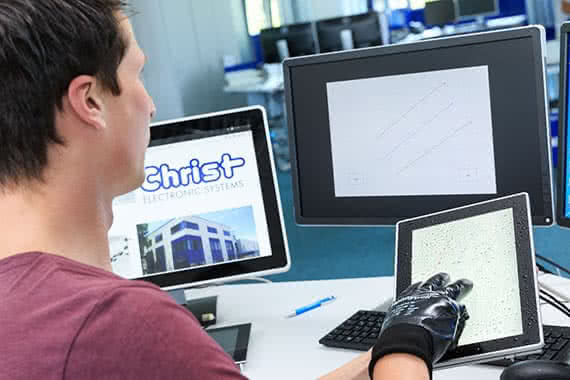What is a capacitive touchscreen?
Everyone knows capacitive touchscreens from tablets or smart phones. But they are also being used more and more in industrial applications. The advantage lies in their robustness, as the sensitive electronics are protected by a layer of glass. No pressure needs to be applied to the capacitive display. Touching the display with a finger changes the electrostatic field between the electrodes. This allows the exact position to be determined.
Functionality of capacitive touchscreens.
Capacitive touchscreens are based on the principle of an electrostatic field generated over the entire surface of the screen. 2 layers with conductive pattern are attached as sensor and driver. The sensor is located on the back of the cover glass, which explains the name. The detection is "projected" through it. Where the electrostatic field changes, the touch can be clearly localized. Due to the high sensitivity of the capacitive touch, gestures and multiple touches (multi-touch) are also recognized. This capability makes the use of capacitive displays in industrial environments particularly interesting.
Possible applications of capacitive touchscreens
The use of capacitive touches has been problematic in applications with glove operation. By sensibly calibrating the sensitivity of the touch, these obstacles can also be easily overcome. This ensures safe machine operation and enables the machine operator to act particularly intuitively. Gestures such as swiping, scaling or rotating are possible without any problems.

Here are other topics that may interest you:
- Resistive Touchscreen
- Touch Calibration
